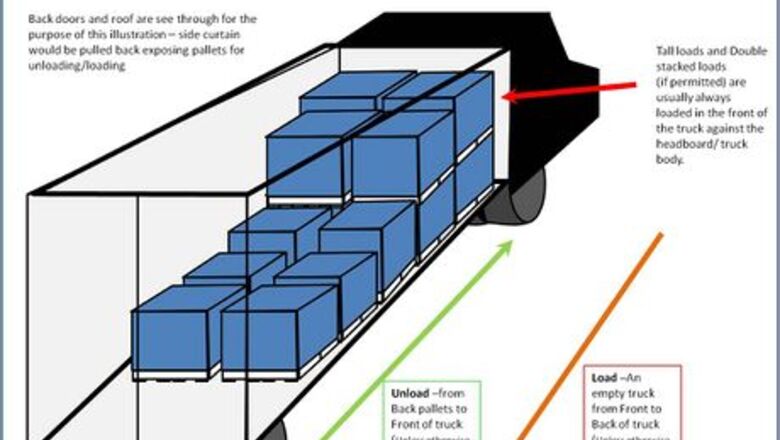
views
Unloading Trucks
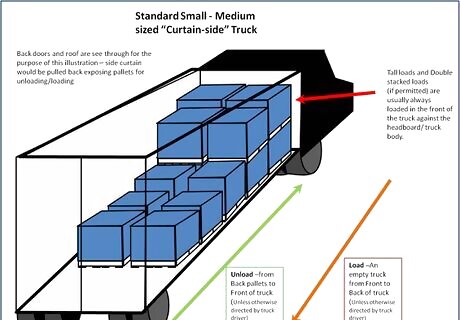
Choose how to unload. It's generally easier to unload than load a truck. There are two ways to unload trucks, trailers, etc: Unloading the truck from both sides, or; Unloading the truck from one side with forklift tine extensions called "slippers".Unloading truck watch.jpg
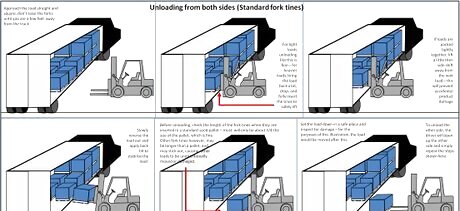
Unload the truck from both sides for the easier option of the two. As the loads are in immediate reach of the forklift truck without the need for using forklift tine extensions, this is the ideal method of unloading trucks for beginner forklift drivers and of course for bulk unloads of trucks and trailers (20+ pallets).
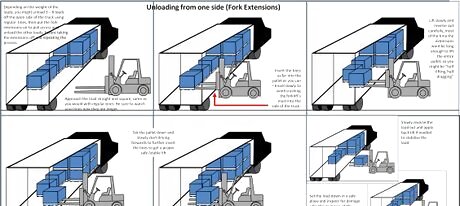
Unload the truck from one side with forklift tine extensions if it's standard protocol at your workplace. Though this is the more difficult option of the two, more often than not, it is the standard protocol for unloading trucks in many workplaces, either to save time or for space constraints. To unload a truck/ trailer from only one side, regular fork tines unload the first side of the truck's freight, while for the second/far side of the trucks freight, fork slippers are used to carefully lift/drag the loads across to the close side of the truck, where they can be unloaded again with regular forks.Unloading with slippers.jpg
Loading Trucks
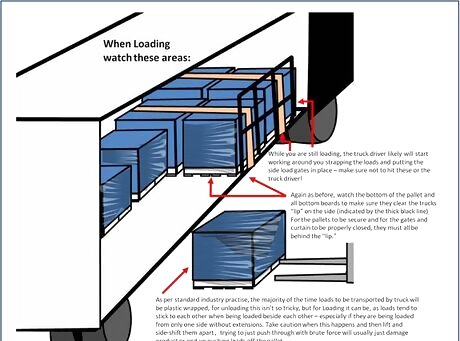
Choose how to load. Loading is generally more difficult than unloading trucks. There are three ways to load trucks, trailers, etc: Loading the truck from both sides Loading the truck from one side without tine extensions or; Loading the truck from one side with forklift tine extensions "slippers" Loading truck watch.jpg
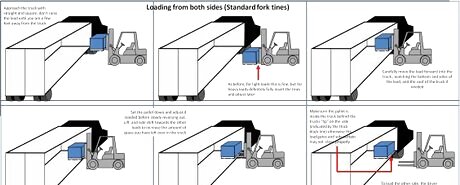
Load a truck from both sides. This is generally the easiest of the three, as the loads are just loaded on both sides of the truck using regular fork tines. This is ideal for bulk (20+ pallet) loads of trucks and trailers but disliked for smaller loads (less than 5 pallets) since the truck driver takes more time opening and closing both sides/curtains of the truck. This also disadvantages the forklift driver as they lose time waiting for the truck driver to open/close, which could have been used to load/unload other awaiting trucks.
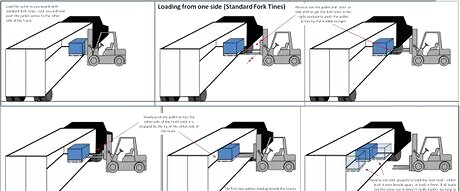
Load the truck from one side without tine extensions. This is certainly the most difficult of the three, since standard forklift tines physically cannot reach the far side of a truck, so the load needs to be carefully pushed by the fork tines across to the other side of the truck - usually a pallet will be pushed by its bottom deck boards or its pallet blocks specifically in the case with euro type pallets, and heavier loads.
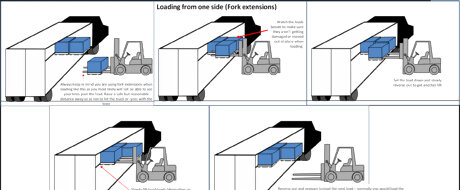
Load the truck from one side with forklift tine extensions. This is more difficult, but definitely could be attempted by a driver of moderate experience. Forklift extensions can allow a load to be lifted across to the other side of the truck.
Unloading Containers
Understand the different ways to unload containers. There are many ways to unload containers: manually, with pallet jacks, ramps, conveyors, and forklifts just to name a few.
Unload a container manually. Unloading a container manually (i.e. by hand) is by far the most labor intensive and time consuming way to unload shipping containers, however it is still prevalent to this day specifically in industries/workplaces that import relatively small and light freight, such as small electrical goods, beverages, nonperishable boxed food, among many more. The only advantage to this is that when a container is to be loaded/unloaded manually, there is no need for the use of pallets which both saves on space (allowing more freight to be shipped, and additionally saves on weight for freight costs.) Typically when unloading a container by hand most freight will still need to be palletised to be put into stock/racking by forklift operators, so one or two workers will be assigned to the container and work inside with a pallet and pallet jack. They will stack the freight on pallets and have a forklift operator take away full pallets and then replenish empty pallets so the container unloaders can once again use the pallet jack to move the pallet further inside the container and begin palletising another pallet of goods. Depending on how many goods there are, it can take anywhere from 2 - 8 hours to manually unload a 20 ft or 40 ft shipping container - e.g. a 20ft shipping container of lightweight but large boxes could be manually unloaded by one person in less than 2 hours, however a 40 ft container full of small boxes can easily take 2 workers a full 8 hour shift to unload, especially if there are different types of freight that need to be put aside while palletising other types of freight that are mixed inside the container.
Unload a container with a container ramp/yard ramp. When unloading a container with a yard ramp, typically a small counterbalance forklift will be used, electric counterbalance forklifts are preferred due to fumes in a confined space, however petrol, gas, and diesel forklifts can still be used to unload containers so long as the engine is not left running for too long while inside the container to avoid a buildup of exhaust fumes. Although large container yard ramps are available and occasionally used to unload containers that are still on the trucks, generally the most common container ramps are small ones that the container needs to be set on the ground for. When unloading a container on the ground with a forklift, typically you should unload the first row of freight close to the opening of the container, then place the container ramp in place with the forklift, so you have some space to be level while driving up the ramp and in and out into the container. As the inside of most shipping containers have wooden floors on their metal frame, you will commonly hear a lot of creaking and cracking noises when driving a forklift inside a container, however this is normal so long as you cannot visibly see any damage happening to the container flooring. When exiting a container going reverse down ramp adjust the load as not too high to hit the container roof, and not too low to catch on the floor/ramp. The general trick is to lift as high as you can without hitting the roof, and lower slowly and smoothly as soon as you clear the roof, and keep an eye on the ramp.
Loading Containers
Understand there are multiple ways to load containers. There are again just as many ways to load containers. Again similar to trucks, loading is generally more difficult.
Load a container manually. This depends on the company, product, shipping costs, etc. While manual container loading is still common in many countries, in others it is rare and not often done just due to the sheer labor and time involved.
Load a container with a container ramp/yard ramp. Similar to unloading, loading containers with use of a forklift is ideal, ideally electric counterbalance forklifts are preferred due to the fumes in a confined space. However, petrol, gas, and diesel forklifts can still be used to unload containers so long as the IC forklift isn't left running inside for extended periods of time. When loading a container, depending on what size pallets you have, typically you will load one as far left/against the container wall as possible, and the other one to the right/ as far right against the container wall as possible. If not loading tall pallets, repeat this for the top stack of pallets. You can load containers double stack as well to save time if you like, but this isn't recommended for beginners or those without a feel for how the freight behaves - pallets of boxed goods are easiest, pallets of stacked bags/sacks are much harder and prone to tearing open. For the last set of pallets, if loading on the floor with a simple steel container ramp, definitely take this away if possible as it will make it much easier to get the last few pallets in.


















Comments
0 comment